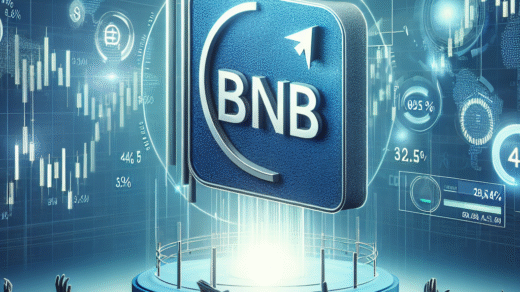How Trump’s Tariffs Could Spark a Crypto Market Rebound: Analyzing Inflation Trends and Bitcoin’s Future
The ongoing U.S.-China trade war is creating significant turbulence in the global financial markets, but it may also present a golden opportunity for cryptocurrency investors. With indications that tariffs could ultimately bring down inflation in the U.S. economy, risk assets like Bitcoin (BTC) stand to benefit. Let’s dive into the implications of these tariffs and their potential effects on the cryptocurrency market.
The U.S.-China Trade War: A Brief Overview
Since President Donald Trump took office, the trade tensions between the U.S. and China have escalated dramatically. In his inaugural address on January 20, Trump vowed to “tariff and tax foreign countries to enrich our citizens,” initiating a series of tariffs aimed at China, Canada, and Mexico starting February 1. As of now, both countries have imposed retaliatory tariffs exceeding 100%, raising concerns about the economic implications of this trade war.
The Impact of Tariffs on Inflation
Tariffs raise the cost of imported goods, which is often passed on to consumers. This can lead to higher general price levels in a consumption-driven economy like the U.S. The fear of a tariffs-induced inflation spike has caused significant volatility in the markets, with Bitcoin dropping nearly 20% since early February. The broader risk aversion has seen investors retreat from stocks, bonds, and even the U.S. dollar.
Disinflation Signals: A Silver Lining for Bitcoin?
Despite these fears, market-based measures of inflation, such as inflation breakevens, are suggesting a different narrative. The five-year breakeven inflation rate peaked at over 2.6% in early February but has since declined to 2.32%. Similarly, the 10-year breakeven rate has dropped from 2.5% to 2.19%. These figures might indicate that the Federal Reserve’s fears of stagflation—characterized by low growth, high inflation, and joblessness—could be misplaced.
Understanding Breakevens and Their Implications for Investors
Breakeven inflation rates compare yields on traditional Treasury bonds with those on Treasury Inflation-Protected Securities (TIPS). A declining breakeven rate suggests that markets might be pricing in lower future inflation, which could give the Federal Reserve the leeway to cut interest rates. This potential for rate cuts might act as a catalyst for a rebound in risk assets, including Bitcoin.
The Long-Term Effects of Tariffs
According to experts, tariffs can be viewed as a one-time cost adjustment. When producers pass on these costs to consumers, inflation levels may initially rise. However, if consumer income does not increase correspondingly, spending typically declines, leading to a buildup of inventory and ultimately contributing to a reduction in prices. Jim Paulsen, a Wall Street veteran, argues that since the Smoot-Hawley Tariff Act, tariffs have historically been deflationary rather than inflationary. He states, “Tariffs produce inflation only in nonmarket or unrealistic developing economies, but not in advanced economies.”
Market Sentiment and Future Outlook
The recent turbulence in financial markets appears to stem more from growth fears than inflation concerns. As these fears subside, the bullish sentiment surrounding Bitcoin could reemerge, especially if the Federal Reserve adopts a dovish stance. Investors may begin to see Bitcoin not just as a store of value but as a hedge against economic instability.
The Role of Bitcoin in a Volatile Market
Bitcoin has increasingly been viewed as a safe haven asset, akin to gold, in times of economic uncertainty. As traditional markets experience fluctuations, many investors are turning to cryptocurrency as an alternative investment. This shift is supported by the growing mainstream acceptance of Bitcoin and other cryptocurrencies, as evidenced by the increasing number of Bitcoin ETFs and investment platforms available today.
How to Invest in Bitcoin and Other Cryptocurrencies
If you’re considering investing in Bitcoin, understanding how to buy cryptocurrency is essential. You can start by exploring platforms such as eToro, Kraken, or Binance. Each platform offers unique features that cater to different types of investors. Additionally, be sure to stay updated on market trends and price predictions, such as the XRP price prediction and other altcoins to diversify your portfolio.
Conclusion: A Bullish Future for Bitcoin?
While the U.S.-China trade war and the resulting tariffs have created short-term volatility in the markets, the long-term implications may be favorable for Bitcoin and other cryptocurrencies. As inflation trends shift and the Federal Reserve potentially eases monetary policy, investors may find themselves in an opportune position for a crypto market rebound. As always, conducting thorough research and staying informed will be crucial for navigating this evolving landscape.
For more information on cryptocurrency and how to invest wisely, check out our guides on buying various cryptocurrencies and understanding their market dynamics.







